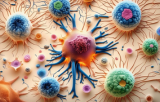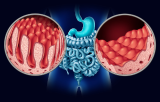Disease-specific primary cells are directly isolated from tissues affected by a particular disease, retaining their original genetic and physiological properties. Unlike immortalized cell lines, these cells provide an accurate representation of in vivo conditions, making them crucial for studying disease mechanisms, drug discovery, and regenerative medicine.
Key Features
-
Authentic Disease Representation – These cells maintain the genetic and phenotypic traits of the disease, allowing for precise modeling.
-
Diverse Applications – Used in research for neurological, oncological, metabolic, autoimmune, and cardiovascular diseases.
-
Limited Lifespan – Unlike immortalized cells, primary cells maintain their original characteristics without artificial alterations.
Applications in Research and Therapy
-
Disease Modeling – Enables scientists to replicate disease progression and study molecular pathways.
-
Drug Testing & Development – Used to evaluate drug efficacy and toxicity in a patient-relevant environment.
-
Regenerative Medicine – Helps develop personalized treatments, particularly with stem cell-based approaches.
Advantages Over Cell Lines
-
Genetic Fidelity – Primary cells maintain the donor's original genetic makeup, reducing artificial mutations.
-
Physiological Accuracy – Their responses mimic real patient biology, improving research reliability.
-
Reduced Experimental Artifacts – Unlike immortalized cells, primary cells are not genetically modified, ensuring natural behavior.







